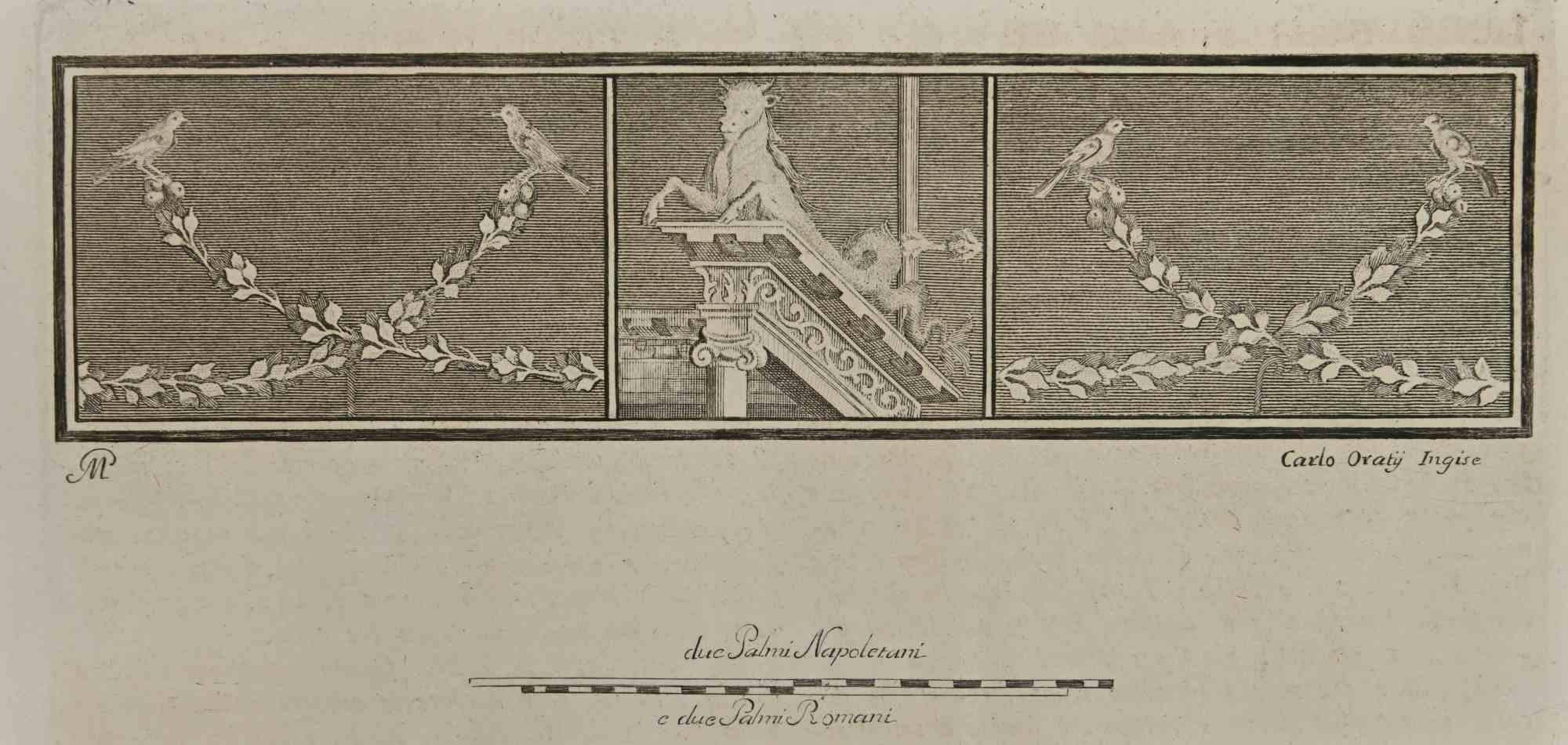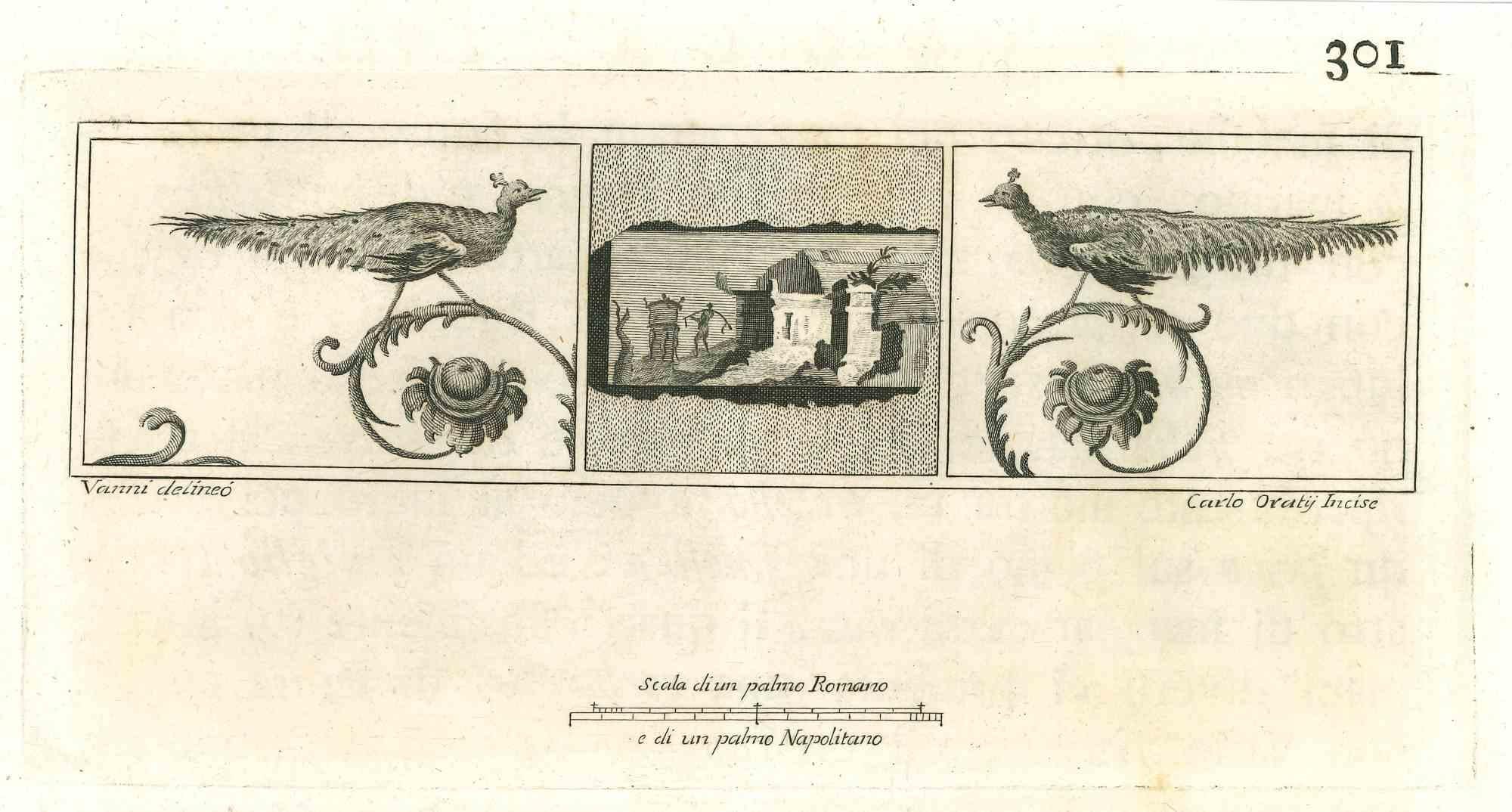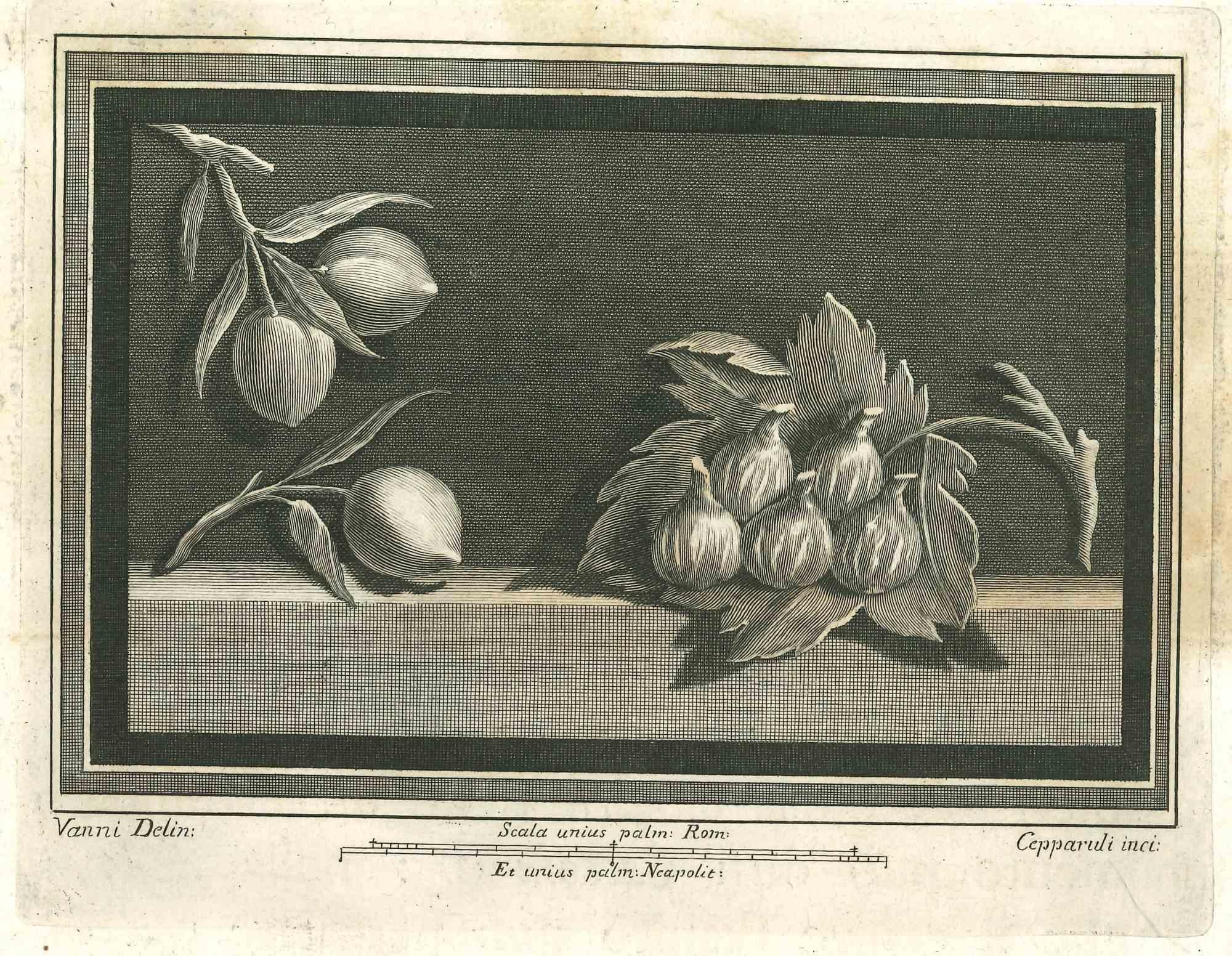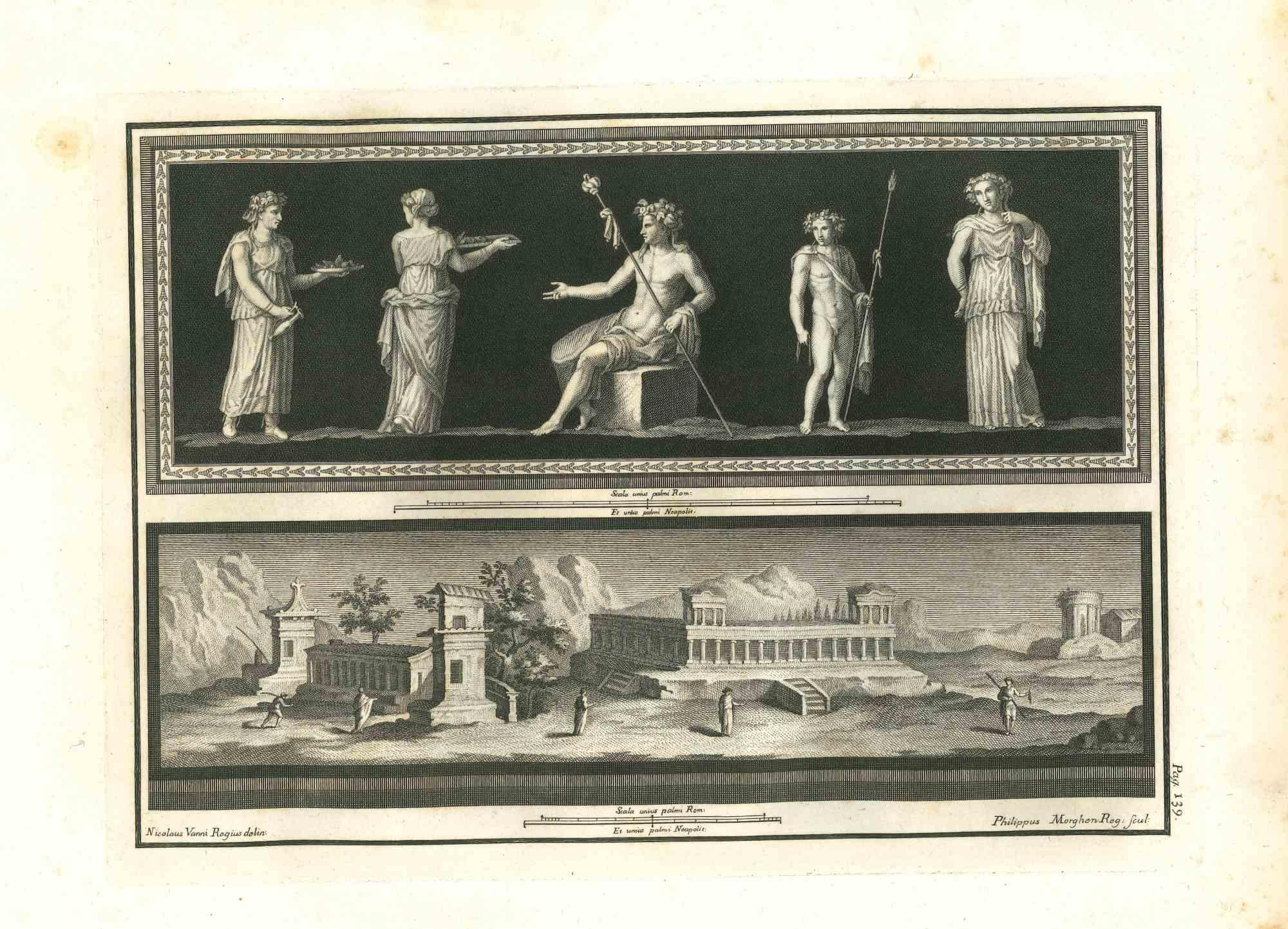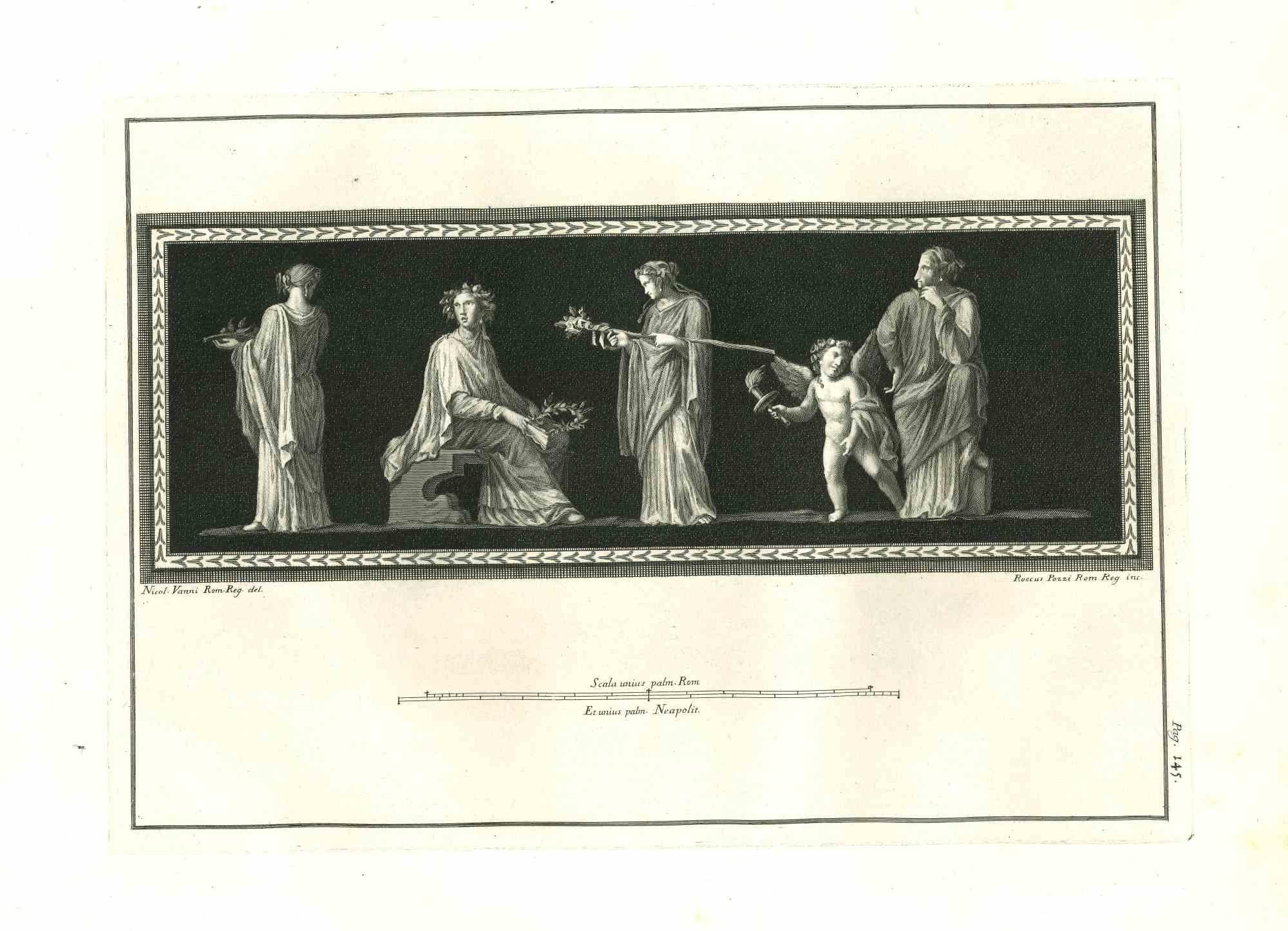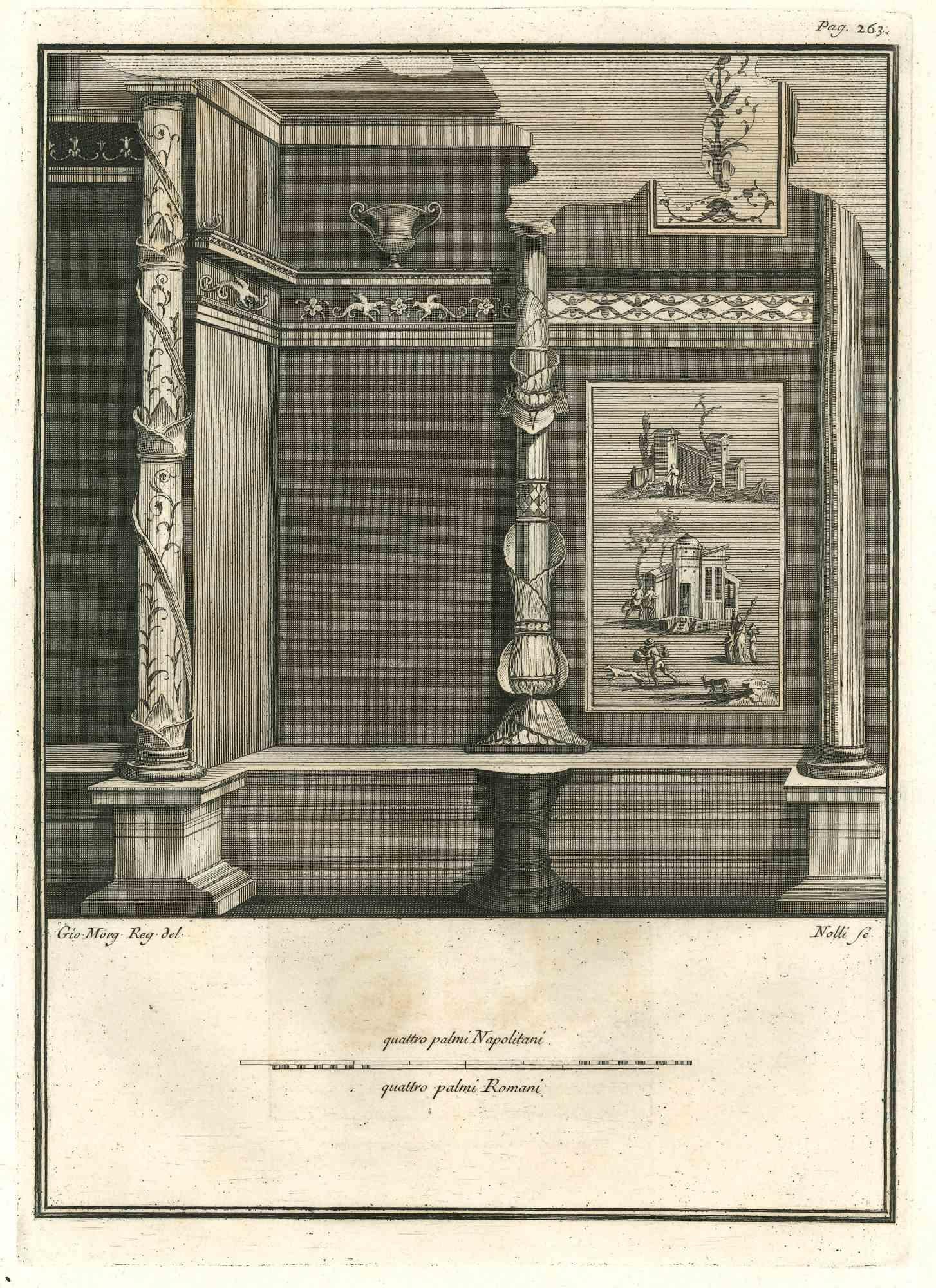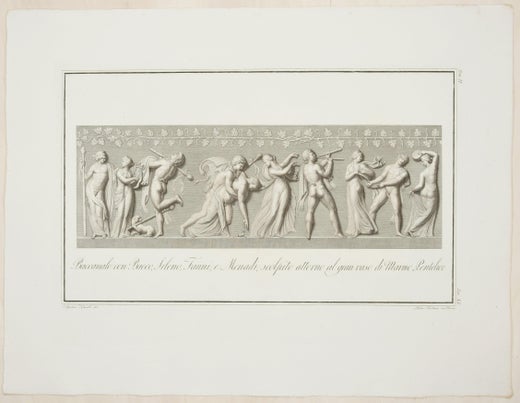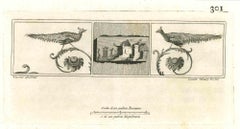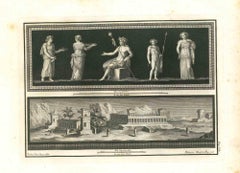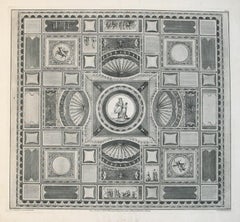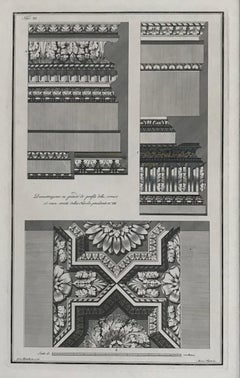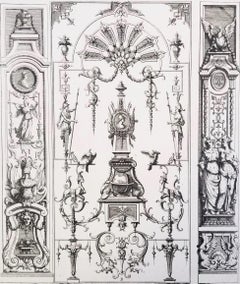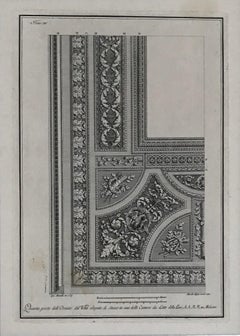Items Similar to Ara con Tripode - Etching by V. Feoli After B. Nocchi - 1821
Want more images or videos?
Request additional images or videos from the seller
1 of 6
Pietro FontanaAra con Tripode - Etching by V. Feoli After B. Nocchi - 18211821
1821
$840.75
£623.34
€700
CA$1,154.99
A$1,260.86
CHF 663.86
MX$15,103.64
NOK 8,490.51
SEK 7,751.97
DKK 5,333.75
About the Item
Image dimensions: 33.7 x 48.6 cm.
“Ara con tripode” (Ara with tripod) is a beautiful black and white burin and etching on paper, realized by the artist Vincenzo Feoli, after Bernardino Nocchi as the inscriptions on plates on lower margins report “Bernardino Nocchi delineò/ Vincenzo Feoli incise in Roma”.
This original print is numbered on plate in Roman numerals on higher margin: “Tom II. /Tav. XXVIII" and is a plate from the series "Illustrazioni de'Monumenti scelti Borghesiani già esistenti nella Villa sul Pincio (..)date ora per la prima volta in luce dal cav. Gio. Gherardo De Rossi e da Stefano Piale sotto la guida di Vincenzo Feoli", by Ennio Quirino Visconti, published by Stamperia de Romanis in Rome, 1821.
Original Title: Ara con Tripode di quindecemviri, e la corona degli Arvali
Translated Tite: Ara with tripod representing fifteen men, and the Arvali's crown
This old master’s original prints shows a beautiful piece of the Borghese's collection, the commemorative ara with the tripod with the decorations of a crown, the Arvali's Crown. The Arvali was an ancient Roman priestly college twelve members chosen for life among the members of the patrician families, who devoted themselves to the worship of the Goddess Dia, an archaic Roman divinity, later identified with Ceres, and of Marmar or Mavors, later identified with Mars, who protected the earth, the fields and the crops.
In excellent conditions with some light signs of the time, with some sporadic minor stains along the margins, a usual yellowing of the paper at the edges, this beautiful etching has preserved still today his beauty and his fresh impression.
Illustrazioni de' Monumenti scelti Borghesiani
This collection in two volumes is a beautifully detailed catalog of classical sculptures collected by Prince Borghese (1730-1800) in his Villa on the Pincio. Ennio Quirino Visconti (1751 - 1818) wrote the texts that accompany the large branches depicting. To these writings, which were available by the son of the illustrious archaeologist, the publishers added only a few illustrations relating to some minor monument of which copper had already been engraved.
The engraved title-plate are signed by draughtsmen like Agostino Tofanelli, Stefano Tofanelli, Bernardino Nocchi, Domenico de Angelis or Teodoro Matteini, and by engravers Pietro Fontana Veneto, P. Vitali, Pietro Bettelini, Giovanni Folo Veneto, Giovanni Brunetti da Ravenna, Giovanni Ottaviani, Francesco Cecchini, Gio. Batta. Leonetti, Girolamo Carattoni, Domenico Cunego, Luigi Cunego, Alessandro Mochetti, Luigi Pizzi, Angelo Campanella or Giacomo Bossi.
The Volume I shows ancient full-length statues, of the Borghese warrior by Agasias (two plates), Greek gods and heroes and Roman famous historical figures; the last two plates represents antique Egyptian deities. There are plates representing ancient bas-reliefs, sarcophagi, of mythological subjects, the Borghese Vase, portrait busts, a vase on an altar, two statues of Amor; and two modern statues, by Bernini (the Apollo and Daphne, and the David).
«Très bel ouvrage» writes Brunet, «Grand ouvrage, le seul qui mérite, parmi ceux sur la villa Borgese, de figurer dans le chapitre aux Galeries et Collections» Vinet said, looking at this plate.
Vincenzo Feoli (Rome, 1750 - 1831)
Vincenzo Feoli was an Italian engraver and a talented translator of topographic, architectural and archaeological drawings, whose professional capacity seems to have been recognized by his contemporaries. He engraved illustrative plates for the main publishing projects of his era. His first known artworks today date back to the first years of the decade 1790-1799, when he should have been over 40 years old. This led Rossella Leoni to postpone the date of his birth of about ten years.
Bernardino Nocchi (Lucca, 1741 - Rome, 1812)
Bernardino Nocchi moved to Rome in 1769 with his colleague Stefano Tofanelli, entering the school of Niccolò Lapiccola where he developed a baroque style with neoclassical suggestions. Bernardino Nocchi was noticed by Pope Pius VI, who in 1780 entrusted him with the painting of the Sacred Apostolic Palaces and then in 1785 with the Print Room of the Vatican Library. But he also works outside the capital, in Gubbio where in 1797 he realizes the transit of St. Joseph in the Church of San Secondo, in Spoleto, in Lucca and in Catania. Returning to Rome, Nocchi painted some of his best paintings: Prince Camillo Borghese in 1799 , The apotheosis of Saint Prudenziana, Saint Novato and Saint Timothy in 1803 and Pius VII in 1807.
- Creator:Pietro Fontana (1762 - 1837)
- Creation Year:1821
- Dimensions:Height: 17.45 in (44.3 cm)Width: 23.23 in (59 cm)Depth: 0.04 in (1 mm)
- Medium:
- Movement & Style:
- Period:
- Framing:Framing Options Available
- Condition:Insurance may be requested by customers as additional service, contact us for more information.
- Gallery Location:Roma, IT
- Reference Number:Seller: M-1015861stDibs: LU65036875472
Pietro Fontana
An Italian artist and engraver, Pietro Fontana was active in Rome and specialized in subjects dealing with the Vatican and the Papacy. He started his career as a student of Raffaello Morghen and is best known for his complete series of engravings of the neoclassical sculptures of Canova. He became a member of the Accademia di San Luca.
About the Seller
4.9
Platinum Seller
Premium sellers with a 4.7+ rating and 24-hour response times
1stDibs seller since 2017
7,874 sales on 1stDibs
Typical response time: 1 hour
- ShippingRetrieving quote...Shipping from: Grasse, France
- Return Policy
More From This Seller
View AllAncient Decoration From Antiquities Of Hercolaneum - Etching - 18th Century
Located in Roma, IT
Ancient Roman Fresco from the series "Antiquities of Herculaneum", is an etching on paper realized by Carlo Oratij in the 18th Century.
Signed on the plate.
Good conditions.
...
Category
Late 18th Century Old Masters Figurative Prints
Materials
Etching
Ancient Roman Fresco - Original Etching by Carlo Oraty - 18th Century
Located in Roma, IT
Ancient Roman Fresco, from the series "Antiquities of Herculaneum", is an original etching on paper realized by Carlo Oraty after Vanni in the 18th century.
Signed on the plate. on ...
Category
18th Century Modern Figurative Prints
Materials
Etching
Ancient Roman Fresco - Original Etching by Francesco Cepparuli - 18th Century
By Francesco Cepparuli
Located in Roma, IT
Ancient Roman Fresco, from the series "Antiquities of Herculaneum", is an original etching on paper realized from a design by Cepparuli after Nicolò Vanni in the 18th century.
Signe...
Category
18th Century Modern Figurative Prints
Materials
Etching
Roman Fresco - Original Etching by Carlo Nolli - 18th Century
By Carlo Nolli
Located in Roma, IT
Ancient Roman Fresco from the series "Antiquities of Herculaneum", is an original etching on paper realized by Filippo Morghen in the 18th Century.
Signed on the plate.
Good condit...
Category
18th Century Old Masters Figurative Prints
Materials
Etching
Ancient Roman Painting - Etching by R. Pozzi, N. Vanni - 18th Century
Located in Roma, IT
Ancient Roman painting - The reverence scene with the angel from the series "Antiquities of Herculaneum", is an original etching on paper realized by Roccus Pozzi and Nicol Vanni in ...
Category
18th Century Modern Animal Prints
Materials
Etching
Ancient Roman Fresco - Original Etching by Carlo Nolli - 18th Century
By Carlo Nolli
Located in Roma, IT
Ancient Roman Drawing, from the series "Antiquities of Herculaneum", is an original etching on paper realized by Carlo Nolli in the 18th Century.
Signed on the plate.
Good conditio...
Category
18th Century Old Masters Figurative Prints
Materials
Etching
You May Also Like
Presse Ludovico Mirri Mercante d’Quadri incentro al Palazzo Bernini a Roma No.42
By Marco Carloni
Located in Paonia, CO
Presse Ludovico Mirri Mercante d’Quadri incontro al Palazzo Bernini a Roma No.42 is from a series of original engravings published by Lodovico Mirri in the late 18th century and engr...
Category
Late 18th Century Figurative Prints
Materials
Engraving
Architectural designs. A set of nine architectural engravings.
By Albertolli Giacondo
Located in Paris, FR
Architectural designs. A set of nine architectural engravings.
These engravings are framed in white gold covered french frames.
From the publication published in Milan in 1782.
"Diff...
Category
1780s Interior Prints
Materials
Engraving
Untitled /// French Ornaments Designs Architecture Jean Bérain Old Master Print
By Jean Bérain
Located in Saint Augustine, FL
Artist: Jean Berain (the Elder) (French, 1640-1711)
Title: "Untitled" (Plate 35)
Portfolio: Ornemens Inventez par J. Berain (Ornament Designs Invented by J. Berain)
Circa: 1711 (Firs...
Category
1710s Old Masters Figurative Prints
Materials
Laid Paper, Engraving, Intaglio, Etching
Ceiling designs. A set of three architectural engravings.
By Albertolli Giacondo
Located in Paris, FR
Ceiling designs. A set of three architectural engravings.
These engravings are framed in white gold covered french frames.
From the publication publishe...
Category
1780s Interior Prints
Materials
Engraving
Parmigiani Amica: An 18th Century Engraving and Etching by Strange After Mazzola
Located in Alamo, CA
This is an 18th century engraving and etching entitled "Parmigiani Amica" by Robert Strange after a painting by Girolamo Francesco Maria Mazzola, better known as Parmigianino, who lived during the Renaissance period. It was published in London in 1774. As the inscription states, the painting was in the collection of the King of Naples at the time the engraving was made. The engraving depicts a half-length portrait of a young woman, known as Parmigiani's Amica (meaning "female friend" in Italian). She is depicted wearing a simple but elegant dress with a low-cut neckline, which reveals her delicate features and graceful neck. Her hair is arranged in a simple yet stylish manner. She is turning to the right to look lovingly at her infant, which she is holding with her right arm. She is touching the baby's mouth with her left hand. The background of the engraving is plain and unadorned, allowing the viewer to focus entirely on the subject of the portrait. The result is a beautiful and timeless image that captures the essence of Renaissance portraiture.
The engraving is printed on watermarked paper. The sheet measures 16.25" high and 12' wide. The sheet is adhered to paper in its upper corners and it has been removed from the paper in its lower corners. There is some mild discoloration and some wrinkling in the margins, including the lower inscription area, and a small dark spot in the upper margin, which may represent a drop of ink occuring at the time of printing. These issues do not involve the image, which is in very good condition. The print is held by several museums and institutions, including: The Metropolitan Museum of Art in New York, The British Museum in London, The Royal Museums of the UK, The British National Trust...
Category
Late 18th Century Portrait Prints
Materials
Engraving, Etching
$1,500 Sale Price
20% Off
Allegory of the four seasons. Four engravings on two framed sheets.
By Albertolli Giacondo
Located in Paris, FR
Allegory of the four seasons. A pair of engravings.
These engravings are framed in white gold covered french frames.
From the publication published in Milan in 1782.
"Different ornam...
Category
1780s Interior Prints
Materials
Engraving
More Ways To Browse
Antique Print Room
Antique Transits
Antique Roman Figures
Pope Pius
Egyptian Plate
Ancient Plate
Altar Vase
The Wailing Wall Dali
Thomas Mcknight Venice
Tim Doyle
Tran Nguyen Hieu
Tranquillo Marangoni
Trolley Banksy
Utagawa Kunisada 1857
Vasarely Juggler
Velvet Elvis
Victor Vasarely Tennis Player
Vintage Braniff Airline Posters
